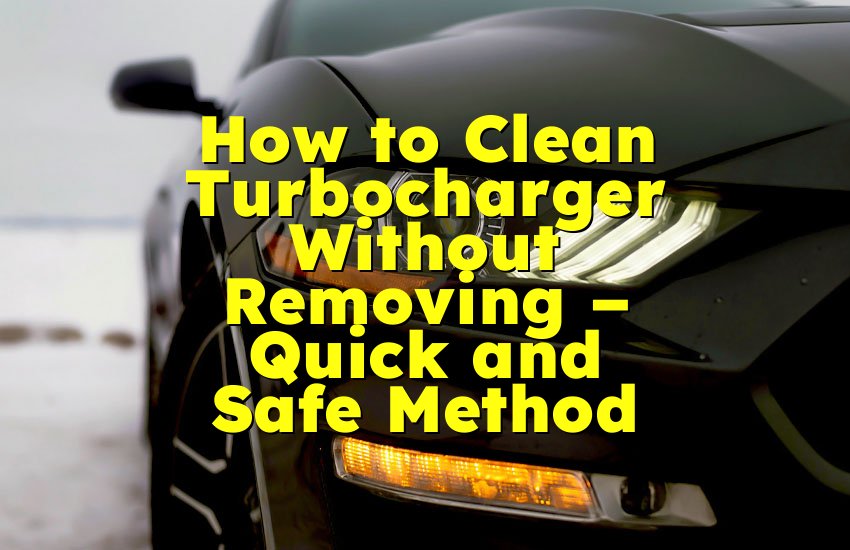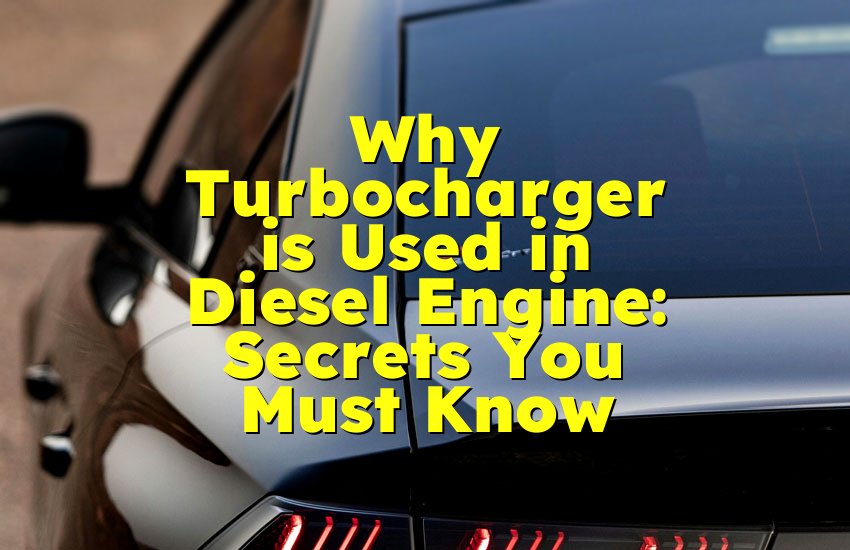As an Amazon Associate, I earn from qualifying purchases at no extra cost to you.
Does Metal Shavings in Oil Mean Your Motor is Gone?
You start your car one morning, everything sounds fine — until later that week, your mechanic shows you something that shakes you: metal shavings in the oil. Your heart sinks. Is the engine ruined? Are you looking at a huge repair bill or a whole new motor? The truth is, finding metal shavings in oil is serious, but it doesn’t always mean your motor is gone. Sometimes, it’s a warning sign. In this article, we'll walk you through what it really means, what you can do, and how to save your motor before it's too late.
What It Means When You Find Metal Shavings in Oil
Finding metal shavings in your engine oil can be scary. It often makes car owners think the motor is already ruined, but that's not always true. To understand this better, let's first look at what engine oil does.
Engine oil keeps your engine parts moving smoothly by reducing friction. It also carries away heat and keeps the engine clean from dirt and small particles. But when you see shiny metal pieces in the oil, it means some metal parts inside your engine are wearing down.
There are two types of metal particles you might see: tiny soft ones and bigger sharp ones. Tiny soft particles, like dust, can be normal, especially after an oil change or on a new engine that's still settling. But if the pieces are sharp and large, that's usually a bad sign. That means parts like bearings, pistons, or crankshafts are breaking down.
When metal moves against metal without enough oil or with dirty oil, it starts to shave off bits. Over time, these small pieces build up. If you don't notice it early, it can lead to major engine damage. Sometimes you might also hear knocking sounds, feel rough driving, or notice oil pressure dropping.
There are many reasons why this can happen. One reason is old oil that hasn’t been changed in a long time. Oil breaks down over time and stops protecting the engine well. Another reason is engine parts getting loose or damaged from overheating or lack of oil. Even a broken filter can let harmful particles go back into the engine.
Just seeing shavings doesn't always mean the engine is gone. A mechanic needs to look closer. They might take apart the oil filter or do an oil analysis to see what kind of metal is inside. Different parts of the engine have different metals. For example, aluminum could mean piston damage, while copper might mean worn bearings.
If you catch it early, a deep clean, oil flush, and replacing damaged parts might fix the problem. But if you wait too long, or if the shavings are too many, it could mean full engine rebuild or replacement.
- Metal shavings are often signs of wear inside the motor
- Not all shavings mean the engine is destroyed
- Big sharp pieces are worse than tiny dust-like ones
- The cause could be old oil, overheating, or broken parts
- Catching the problem early can save the engine
- An oil test can tell which engine parts are wearing out
How to Spot Early Signs Before Your Motor Gets Worse
Knowing the signs early can save your motor. The first sign is usually something simple: a strange sound. Maybe you hear knocking or ticking under the hood. These sounds often come from parts rubbing together when they shouldn’t. When metal parts grind or hit each other, it creates a sound that's hard to miss. That noise is your motor crying out for help.
Another big sign is low oil pressure. If you notice your oil warning light comes on, don’t ignore it. This light means the oil isn’t doing its job anymore. Maybe it’s too thin, too dirty, or there’s not enough of it. When oil doesn’t reach all parts of the engine, metal rubbing happens — and that leads to shavings.
Next, think about how your car feels. Does it shake more than usual? Is it harder to start? Does the engine feel rough or weak? These small changes in how your car runs are red flags. Your engine is trying to work through damage, and every mile you drive makes it worse.
Checking your oil during regular maintenance is one of the best ways to spot problems. Pull out the dipstick and look closely. Do you see tiny silver pieces? That's not normal. Even if the oil still looks dark and full, shiny bits mean trouble. Some people also cut open the oil filter to look inside. Filters catch a lot of these shavings, so checking the inside can tell a lot.
Burning smells and smoke from the engine can also mean trouble. That often means the oil is overheating or metal is rubbing inside, making too much heat. If the engine gets too hot, it can cause even more wear and make the problem worse quickly.
You don't have to be a car expert to spot these things. If something feels off, it probably is. Always trust your senses — sound, smell, feel — when something about your car doesn't seem right. And the earlier you act, the better chance you have of saving your motor.
- Listen for knocking or ticking sounds
- Watch for oil pressure light or low oil levels
- Feel for rough running or hard starts
- Check for shiny metal in oil using the dipstick
- Cut open old oil filters to look inside
- Pay attention to burning smells or engine smoke
What Causes Metal Shavings to Appear in Engine Oil
There are many reasons why metal shavings show up in your oil. One common reason is wear and tear from age. As engines get older, the moving parts inside start to rub and slowly break down. Even with good maintenance, some wear is normal, but heavy wear is not.
Another major cause is dirty or old oil. Oil gets thick and loses its power to protect your engine if it isn't changed on time. Dirty oil can't flow well and doesn't stop metal parts from touching each other. When parts rub, they shave off tiny bits, and these get into the oil.
Overheating is another problem. If your engine gets too hot too often, metal expands and rubs even harder. Hot engines can also break down oil faster, making it useless. This is why watching your temperature gauge is important.
Sometimes, poor quality parts or engine rebuilds can lead to early failure. Cheap bearings or bad piston rings won't last long. When they break, they leave metal behind. Bad engine builds or wrong installation can also create stress in the motor.
A broken oil pump can also lead to this problem. If the pump can't push oil to all parts, metal pieces will wear out faster. Lack of oil flow is one of the biggest reasons for shavings in the oil.
Sometimes, people drive their cars too hard. Racing, hauling heavy loads, or not warming up the engine first can cause faster damage. Cold starts are especially hard on engines. When the oil is cold and thick, it doesn't move fast enough to protect moving parts.
Also, a broken timing chain or worn camshaft can create metal shavings. These parts are key to engine timing, and if they wear out, they spread metal into the oil.
Every one of these causes leads to parts rubbing or breaking. And once metal enters the oil, it travels to other parts, causing even more wear.
- Old age causes normal wear and tear
- Skipping oil changes leads to dirty oil
- Overheating causes metal parts to expand and rub
- Cheap or broken engine parts break down faster
- Weak oil pumps can't protect all parts
- Driving too hard or cold starts add more stress
- Timing chain or camshaft wear causes sharp metal bits
How to Fix the Problem When Metal Is Already in the Oil
If you've found metal in your oil, don't panic — but do act fast. First, stop driving your car. Driving with metal in the oil spreads the damage. Your first move should be to change the oil and filter. This clears out most of the loose metal and helps see how bad it really is.
Use a magnet to check the oil you drain. If it picks up a lot of metal, it could be steel from worn bearings or gears. If the metal doesn't stick, it might be aluminum or copper. This helps your mechanic know which parts may be damaged.
After changing the oil, check the oil pressure and listen to the engine. If it still sounds smooth and strong, the damage might not be too bad. But if you hear noise, or the oil light comes back on, get help quickly.
Next, your mechanic might run an oil analysis. This test shows what kind of metal is in the oil. Each part of your motor has different metals. Knowing what kind is wearing out helps you fix the right part.
If the damage is small, you may only need new bearings or to replace worn parts. But if you wait too long, you could need a full rebuild or even a new motor. Fixing it early saves time, money, and stress.
Some shops use engine flush products. These clean out stuck metal and sludge. This step is sometimes helpful, but not always safe for old or very damaged engines. Your mechanic will know if it’s safe to use.
Also, check your oil filter after driving for a short while with fresh oil. If it's full of metal again, the damage is still happening. You'll need deeper repairs.
Fixing this problem needs care. Doing it right means cleaning, testing, replacing damaged parts, and sometimes even rebuilding the motor.
- Stop driving right away to avoid more damage
- Change oil and filter to remove metal bits
- Use a magnet to test what kind of metal it is
- Listen to the engine and check oil pressure
- Use oil analysis to find the worn part
- Small damage may only need part replacement
- Too much damage needs a rebuild or full engine swap
Ways to Prevent Metal Shavings From Harming Your Motor
The best fix is always prevention. Keeping your engine safe from metal shavings is easier than fixing the damage later. The first rule is regular oil changes. Always follow your car manual's schedule. If you drive a lot, tow heavy things, or live in hot places, you might need to change oil more often.
Use high-quality oil and filters. Cheap oil breaks down fast. Good oil protects longer, keeps the engine cleaner, and fights off metal wear. A strong oil filter also stops small metal bits from going back into the motor.
Warm up your engine before driving fast. Cold oil doesn't flow well. Giving your engine a minute or two to warm up helps oil spread and protect the engine better.
Pay attention to how your car feels and sounds. If it runs rough, knocks, or has a warning light, check it right away. Don't wait. Small signs often mean small repairs.
Flush your engine now and then. This is not for everyone, but for high-mileage engines, an oil flush can clear out sludge and metal. Ask your mechanic if it's a good idea for your car.
Stick to a routine. Check your oil every few weeks. Look at the color and feel. Shiny bits mean trouble. Catching this early can save your motor.
Also, avoid hard driving if your car isn't made for it. Fast starts, long high speeds, or towing heavy trailers can all raise engine stress. Use your car the way it was built to be used.
Lastly, fix engine problems right away. Leaks, overheating, and strange sounds should never be ignored. Small problems turn into big ones fast when metal starts rubbing metal.
- Change oil on time with good-quality oil
- Use strong, trusted oil filters
- Warm up the engine before driving fast
- Listen and feel for odd engine behavior
- Ask about oil flush for high-mileage motors
- Check oil often for shiny or gritty bits
- Avoid rough driving if your car isn't built for it
- Fix small engine problems before they get worse
When It’s Too Late: Signs Your Engine Might Be Done
Sometimes, the damage is already too far gone. Knowing when it's too late can help you prepare and make smart choices. One sign is loud engine knocking. If it sounds like metal hitting metal, your bearings might be gone. That usually means deep engine damage.
Another big warning is low compression. If the motor can’t build pressure, it won't run right. The engine may start hard or stall, shake, or feel weak. A mechanic can do a compression test to check this.
Lots of smoke from the exhaust is another sign. Blue smoke means the engine is burning oil. That happens when the cylinder walls or piston rings are damaged. Once oil leaks into the combustion area, it can't be fixed without big repairs.
A locked engine is the worst case. That's when the parts are so damaged they can't move. If your engine seizes up and won't turn, it's usually game over. Rebuilding might cost more than the car's value.
If metal shavings keep showing up even after oil changes and repairs, it could mean the whole engine is wearing out. That's a big sign that a rebuild or full replacement is needed.
Fixing a ruined engine can be expensive. Sometimes it's cheaper to replace the engine or the whole car. Talk with a trusted mechanic to see what's best.
- Loud knocking or banging sounds from inside
- Engine stalls, shakes, or struggles to start
- Thick smoke from exhaust, often blue
- Compression test shows low pressure
- Engine locks up and won't turn
- Shavings keep showing after repairs
- Cost of fix may be higher than car value
Final Thoughts
Metal shavings in oil don't always mean your motor is gone, but they are a serious warning. Acting fast can save your engine and your money. Pay attention to how your car sounds, feels, and smells. Do regular oil checks and change the oil on time. If you catch the problem early, you might only need a small repair. But if you wait too long, you could be looking at a full rebuild or even a new engine. Keep your motor healthy by taking care of it before problems grow.
Frequently Asked Questions (FAQs)
Is it normal to see a few metal shavings in oil?
It can be normal to see tiny amounts of fine metal dust in your oil, especially if the engine is new or just had major repairs. These particles are from parts settling in. But if you see large, shiny pieces or feel gritty bits between your fingers, that's not normal. It means metal is being worn away inside your engine. The more and bigger the pieces, the worse the problem likely is. Always have a mechanic check if you see any shavings.
Is it safe to drive with metal shavings in oil?
No, it's not safe. Driving with metal shavings in the oil can make engine damage worse fast. The shavings move through the oil and scratch or damage more engine parts. If you keep driving, you could turn a small repair into a full engine rebuild. If you spot metal in your oil, stop using the car and get it checked right away. The longer you wait, the higher the repair costs will be.
Is it possible to remove metal shavings without engine rebuild?
Yes, if the damage is caught early. You can sometimes fix the issue by changing the oil and filter, using a strong magnet to catch any metal, and replacing the damaged part. Some shops also use engine flush to help clean the inside. But this only works if the wear is not too deep. If the shavings are coming from major parts like crankshaft or pistons, then a rebuild may still be needed.
Can an oil filter catch all the metal shavings?
Oil filters can catch many small shavings, but not all. Some metal bits are too small or too sharp and slip through. Over time, filters can also get clogged and stop working well. That's why it's good to change both the oil and the filter regularly. If you suspect engine damage, a mechanic might cut open the filter to check what it has caught. That tells a lot about the problem.
Can old oil cause metal shavings?
Yes, old oil is a big reason why metal shavings show up. Oil gets thick and dirty over time. It stops protecting engine parts and lets them rub together. That rubbing shaves off small metal bits. Changing oil too late or using cheap oil can cause more engine wear. Always use good oil and change it on time to stop this from happening.
Do I need a mechanic to check for metal in oil?
It's a good idea. You can look at the dipstick or drain the oil yourself, but a mechanic has the right tools and experience. They can test the oil, check the filter, and do a full checkup on the motor. This helps find out where the metal is coming from and how bad the damage is. Trying to fix it without knowing the cause can make things worse.
Do I have to replace the engine if I see metal shavings?
Not always. If you catch it early, you might only need small repairs like new bearings or seals. But if the engine is knocking, has low compression, or keeps making metal, a full rebuild or engine swap may be needed. It depends on how bad the wear is and how much damage the metal has caused.
Can driving style cause metal in oil?
Yes. Hard driving, fast starts, or towing heavy things often put stress on the engine. This can lead to faster wear. Cold starts without warming up the engine also cause damage. When oil is cold, it doesn't flow well, and metal can rub. Driving gently and keeping up with maintenance helps stop metal from building up.











